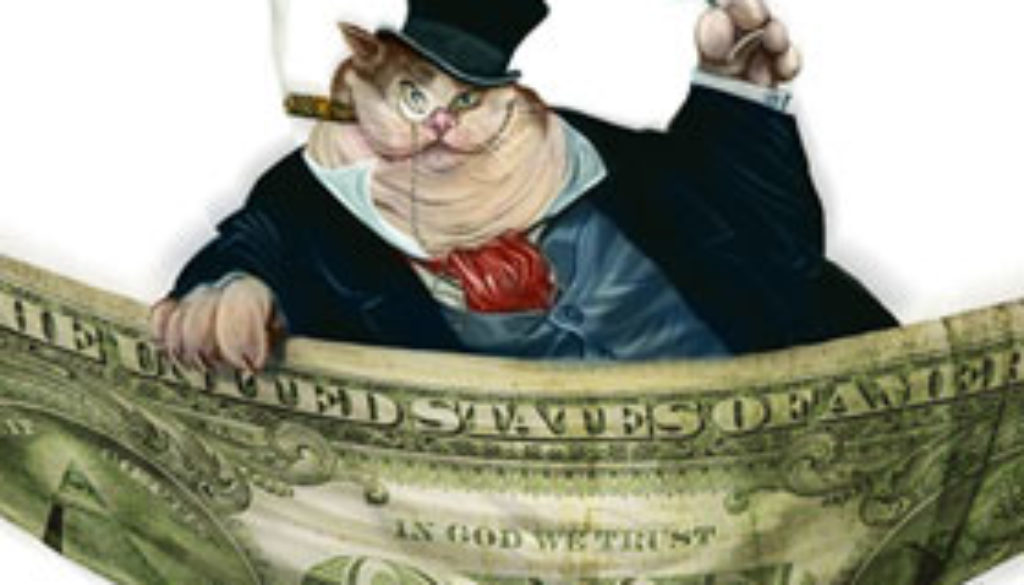Stop Wall Street Payouts That Produce TARP Bailouts
By Dennis Kelleher and Jack Reidhill, Better Markets
As the country’s financial system spiraled out of control, ten years ago today President George W. Bush signed into law the Emergency Economic Stabilization Act of 2008 creating the $700 billion Troubled Asset Relief Program (TARP). The passage of the bill was a key element in responding to the collapse of the financial markets, allowing the government to inject billions of capital into the six largest bank holding companies soon after passage.
The taxpayer TARP capital was necessary because the too-big-to-fail banking conglomerates on Wall Street had grossly insufficient capital (particularly high quality common equity) of their own in 2008 to absorb their massive losses resulting from the collapse of the subprime mortgage bubble. That was due to a number of reasons, but primary among them was those banks spending down their capital on stock buybacks and dividends in the years before the crash and, indeed, up to and after the collapse of Lehman Brothers on September 15, 2008.
Put differently, TARP and taxpayer money was necessary because the banks irresponsibly ejected capital prior to the crisis and intentionally ran overleveraged businesses, which boosted their profits and bonuses. When the crisis hit, having paid themselves and their shareholders hundreds of billions of dollars before the crash, they now needed hundreds of billions of dollars from taxpayers to prevent them from going bankrupt, which was the inevitable result of their business model and management decisions.
A capital cushion is the only thing that stands between a failing bank and taxpayer bailouts like TARP. That’s why the Dodd Frank Wall Street and Consumer Protection law of 2010 required significant increases in bank capital, particularly at the largest banks. Because a substantial capital cushion enables banks to absorb their own losses and to continue lending to support the real economy in a downturn, increasing capital requirements is one of the key pillars of post-crash reforms.
However, the Federal banking regulators are moving to weaken capital in two ways. First, a recent proposalwill directly result in lowering the amount of capital the very largest banks are required to maintain. Second, they are considering much less realistic stress tests, which determines the amount capital a bank can eject via stock buybacks and dividend payments. These and other deregulatory actions are a direct threat to the progress that has been made toward a better capitalized, more stable financial system.
This is unfortunately repeating history. Although not well known, the banking industry’s relentless dividend and stock buyback programs before the 2008 crash contributed to their incredibly weak capital position going into the crisis. A working paper from the National Bureau of Economic Research found that the very same large financial institutions that suffered huge credit losses during the crisis also, just prior to the crisis, paid out large amounts of capital through dividends and stock repurchases.
Remarkably, as the paper points out, those “[b]anks that ultimately received public funding support [from TARP] and were in serious risk of failure continued to pay out dividends right from the period leading up to the crisis until the period after Lehman Brothers’ bankruptcy.” (Emphasis added) In addition, those banks also engaged in massive stock buybacks:
“During this period, the 25 large financial firms of the US, the UK and Europe, had negative common equity issuance – that is, more share buybacks than share issuance – of $4.02 billion.”
The big banks’ dividend addiction as the crisis broke was detailed in the paper:
“In the 2007-2009 period, all the banks (excluding the GSEs) which had received TARP funding had paid at least 45% of the amount as dividends in 2007-2009. JP Morgan, had paid out $12 billion dollars, almost half of the TARP funds it eventually received from the government. Similarly Bank of America and Citigroup which received $45 billion each in TARP funds had paid out $21 billion (13.8% of total equity and 46.7% of their TARP funds) and $17 billion (17% of total equity and 37.8% of TARP funds) respectively in 2007-2009.”
Put differently, the banks intentionally and needlessly reduced their capital cushions even as the crisis was upon them, which is what required much of the TARP and other bailouts. When banks should have been conserving capital, they irresponsibly ejected it via dividends and stock buybacks that enriched shareholders, which, conveniently, included their top executives.
Those actions not only weakened the banks and created the need for bailouts, it also reduced their ability to continue lending to support the economy during the crisis. As Morris Goldstein’s book Banking’s Final Exam demonstrated, well capitalized banks lend through the business cycle and support the economy, while under-capitalized banks pull back on lending to cover their liabilities which makes the economic downturn deeper and longer.
The actions by the biggest banks going into the crash and immediately afterwards caused such an uproar that President Obama’s Chairman of the National Economic Council, Larry Summers, had to commit to limit such egregious conduct before Congress voted to release the second tranche of TARP. In his January 12, 2009 letter to the Congress, he assuring them that:
“Those receiving [TARP] assistance will be subject to tough but sensible conditions that limit executive compensation until taxpayer money is paid back, ban dividend payments beyond de minimis amounts, and put limits on stock buybacks.”
Given the large banks’ history, even in the face of a catastrophic financial crisis, the banking regulators have no legitimate basis for their proposed changes to capital and stress tests, which assume that in another crisis banks would cut their dividends in half and would cease all stock repurchases and redemptions. The evidence clearly shows that large banks will not do that, no matter the stress, unless they are required to do so.

